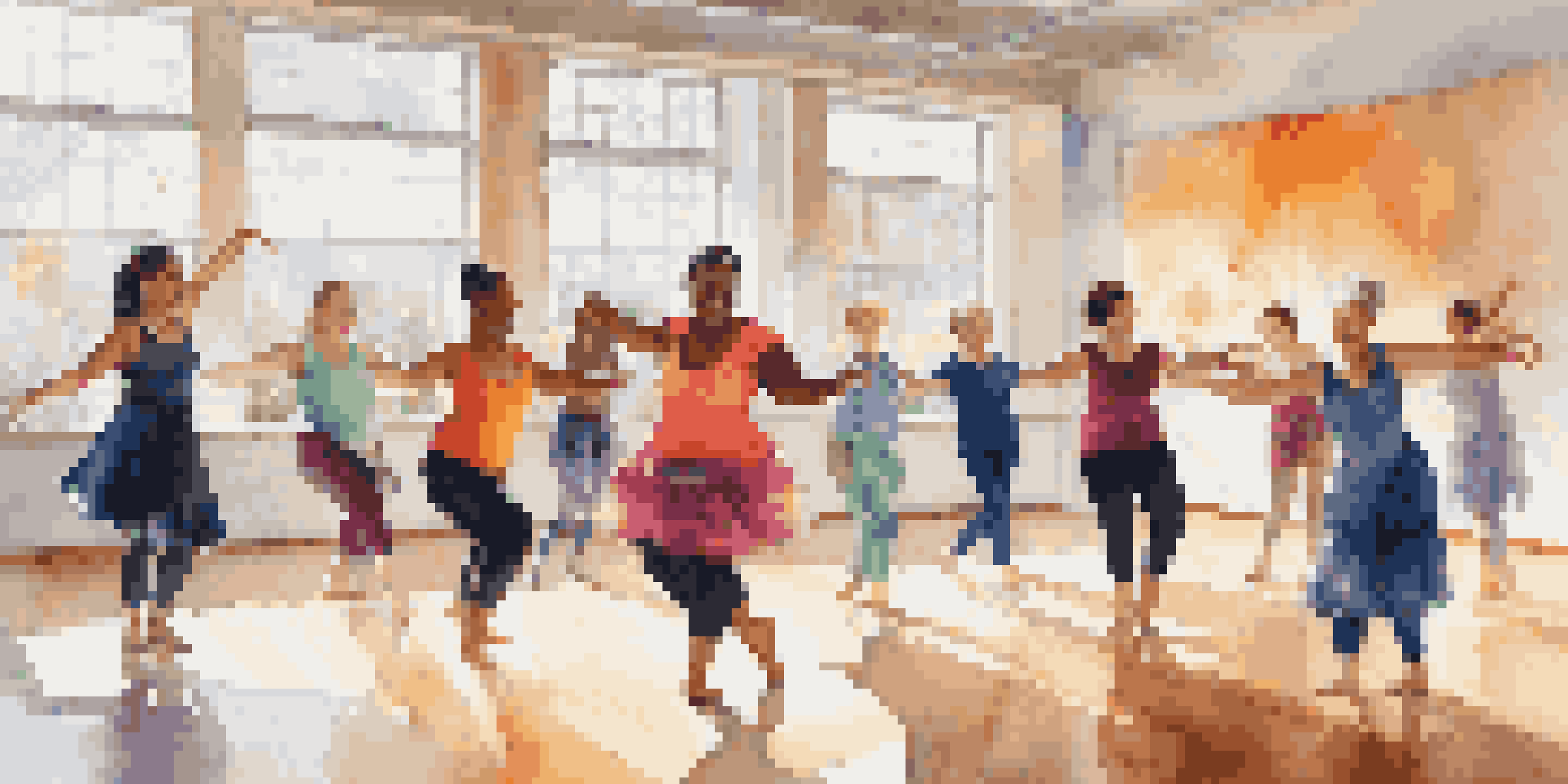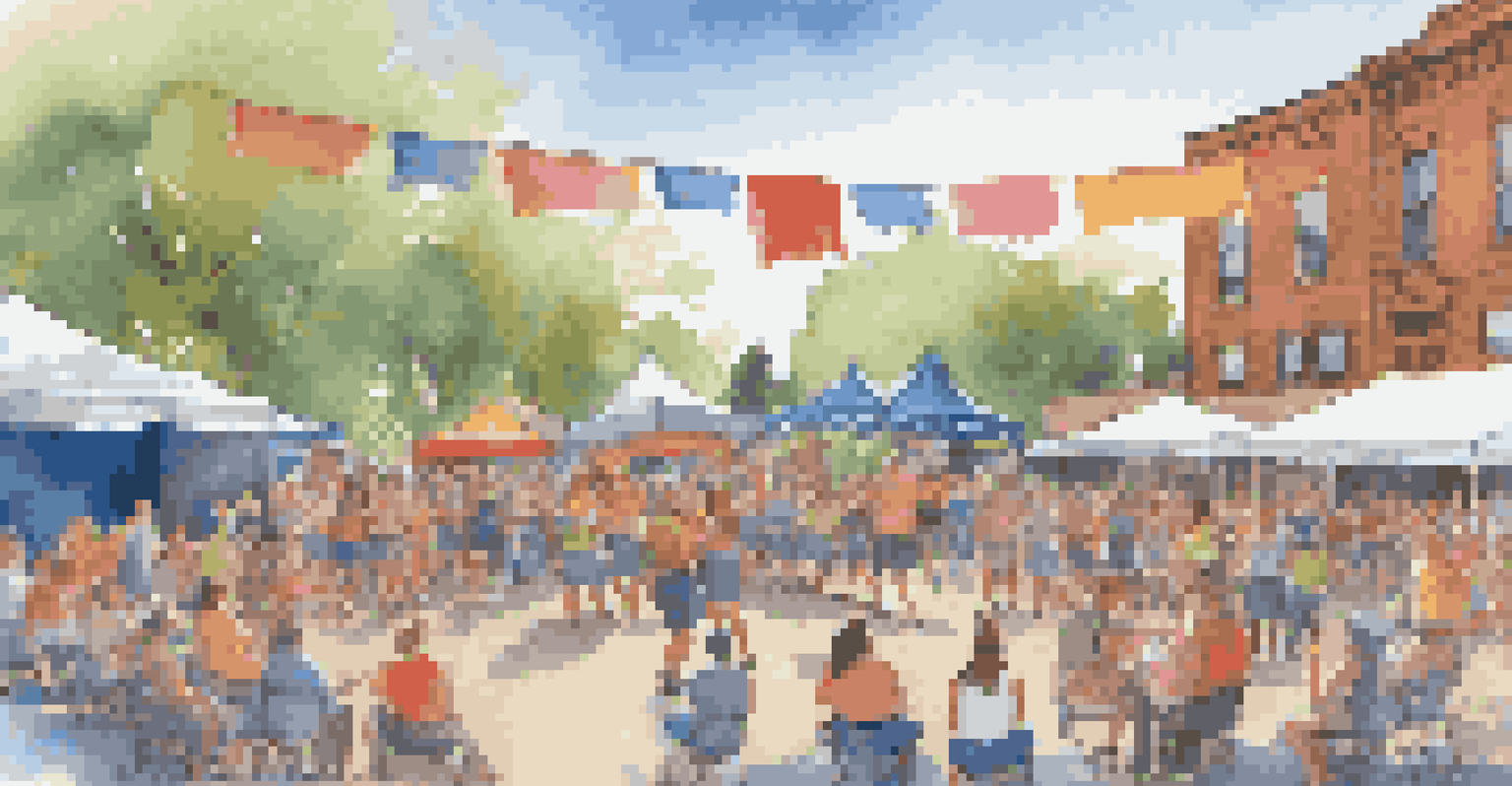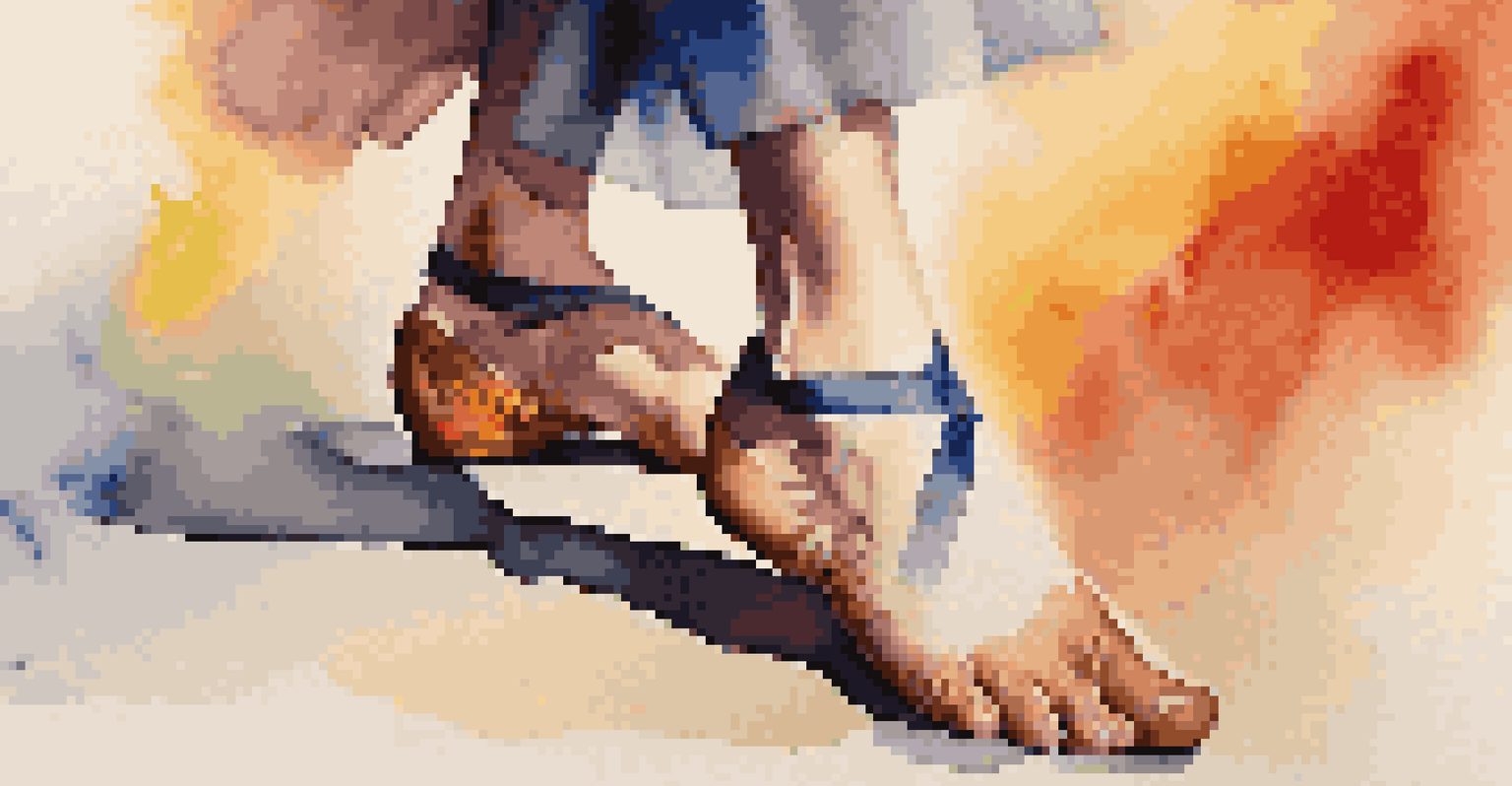Exploring Grants and Funding for Adaptive Dance Programs

Understanding Adaptive Dance and Its Importance
Adaptive dance programs provide individuals with disabilities the opportunity to express themselves through movement. These programs not only promote physical health but also enhance emotional well-being and social skills. For many participants, dancing can be a powerful outlet for creativity and self-expression, fostering a sense of community.
Dance is the hidden language of the soul.
The importance of adaptive dance transcends mere physical activity; it also cultivates inclusivity. By participating in these programs, dancers build confidence and develop a greater sense of belonging. Creating an environment where everyone can dance, irrespective of their abilities, enriches the fabric of our communities.
As awareness of adaptive dance grows, so does the potential for funding opportunities. Grasping how to navigate these avenues can significantly impact the sustainability and reach of these vital programs.
Identifying Key Funding Sources for Adaptive Dance
When seeking funding for adaptive dance programs, it's essential to explore various sources. Grants from government agencies, private foundations, and corporate sponsors can provide the necessary financial support. Each source has its unique criteria and application processes, which can sometimes feel like navigating a maze.

Local arts councils and community foundations often allocate funds specifically for inclusive arts initiatives. These organizations understand the value of adaptive dance and may offer tailored grants for such programs. Networking within your community can reveal hidden gems of funding opportunities that may not be widely advertised.
Adaptive Dance Boosts Community
Adaptive dance programs foster creativity, inclusivity, and social skills, enriching the lives of participants and their communities.
Don't overlook crowdfunding as a viable option as well. Platforms like GoFundMe or Kickstarter can help rally community support and raise funds directly from those who believe in your mission.
Navigating the Grant Application Process
Applying for grants can be daunting, but breaking it down into manageable steps makes it easier. Start by thoroughly researching available grants that align with your program's goals. Pay close attention to eligibility requirements and deadlines; missing a crucial detail can derail your application.
The best way to find yourself is to lose yourself in the service of others.
Once you've identified potential grants, gather the necessary documentation. This could include financial statements, a detailed budget, and descriptions of your program's impact. A compelling narrative that showcases the benefits of your adaptive dance program can make a significant difference in your application’s success.
Finally, always remember to follow the submission guidelines closely. Each grant may have specific formatting requirements or additional materials needed, and adhering to these can reflect your professionalism and attention to detail.
Building Partnerships to Enhance Funding Opportunities
Forming partnerships with local organizations can open doors to additional funding opportunities. Collaborating with schools, healthcare providers, or community centers can not only enhance your program's resources but also strengthen your grant applications. Many grantors look favorably on collaborative efforts that demonstrate community engagement.
Consider reaching out to organizations that share a similar mission. For instance, a partnership with an organization focused on disability rights can bring added credibility to your adaptive dance program. Together, you can pool resources, share expertise, and reach a broader audience.
Funding Sources for Adaptive Dance
Exploring grants, partnerships, and crowdfunding can provide essential financial support for sustaining adaptive dance initiatives.
These partnerships can also lead to joint funding applications, which can improve your chances of securing grants. By demonstrating a united front, you show potential funders that your program has community backing and a wide-reaching impact.
The Role of Fundraising Events in Supporting Programs
In addition to grants, hosting fundraising events can be an effective way to support adaptive dance programs. Events like dance-a-thons, gala dinners, or community showcases not only raise funds but also spread awareness about the importance of adaptive dance. They create an opportunity for the community to come together and celebrate inclusivity.
When organizing a fundraising event, be sure to promote it through social media, local newspapers, and community bulletins. Engaging local businesses as sponsors can also help cover costs and increase visibility. The more people know about your event, the more likely you are to attract attendees and potential donors.
Moreover, these events can cultivate a sense of community ownership over the adaptive dance program. When individuals feel personally connected to the initiative, they're more likely to contribute time, resources, and funds.
Utilizing Online Platforms for Funding and Awareness
In today's digital age, online platforms can serve as powerful tools for both funding and awareness. Websites like Facebook, Instagram, and Twitter allow organizations to share their stories and connect with potential donors across the globe. Visual storytelling, such as videos of dance performances, can be particularly impactful.
Many online funding platforms cater specifically to nonprofit organizations and artistic initiatives. Websites like Patreon or DonorsChoose can help you reach a wider audience eager to support adaptive dance. By creating engaging content, you can inspire people to invest in your mission.
Engaging Events Raise Awareness
Fundraising events not only generate funds but also promote awareness and community involvement in adaptive dance programs.
Additionally, online campaigns can facilitate peer-to-peer fundraising, where supporters can create their own fundraising pages. This not only expands your reach but also fosters a community of advocates for your program.
Sustaining Funding for Long-Term Program Success
Once you've secured funding, the next challenge is sustainability. Developing a clear financial plan that outlines how funds will be allocated can help ensure long-term success. Regularly assessing your program's financial health and adjusting your budget as needed will keep you on track.
Establishing a loyal donor base is crucial for ongoing support. Regular communication with donors about the impact of their contributions can strengthen relationships and encourage continued investment. Consider sending newsletters, hosting donor appreciation events, or providing updates on participant progress.

Ultimately, demonstrating the tangible benefits of your adaptive dance program will attract ongoing support. Share success stories, testimonials, and data that highlight how your program has transformed lives, as this can effectively resonate with potential donors.